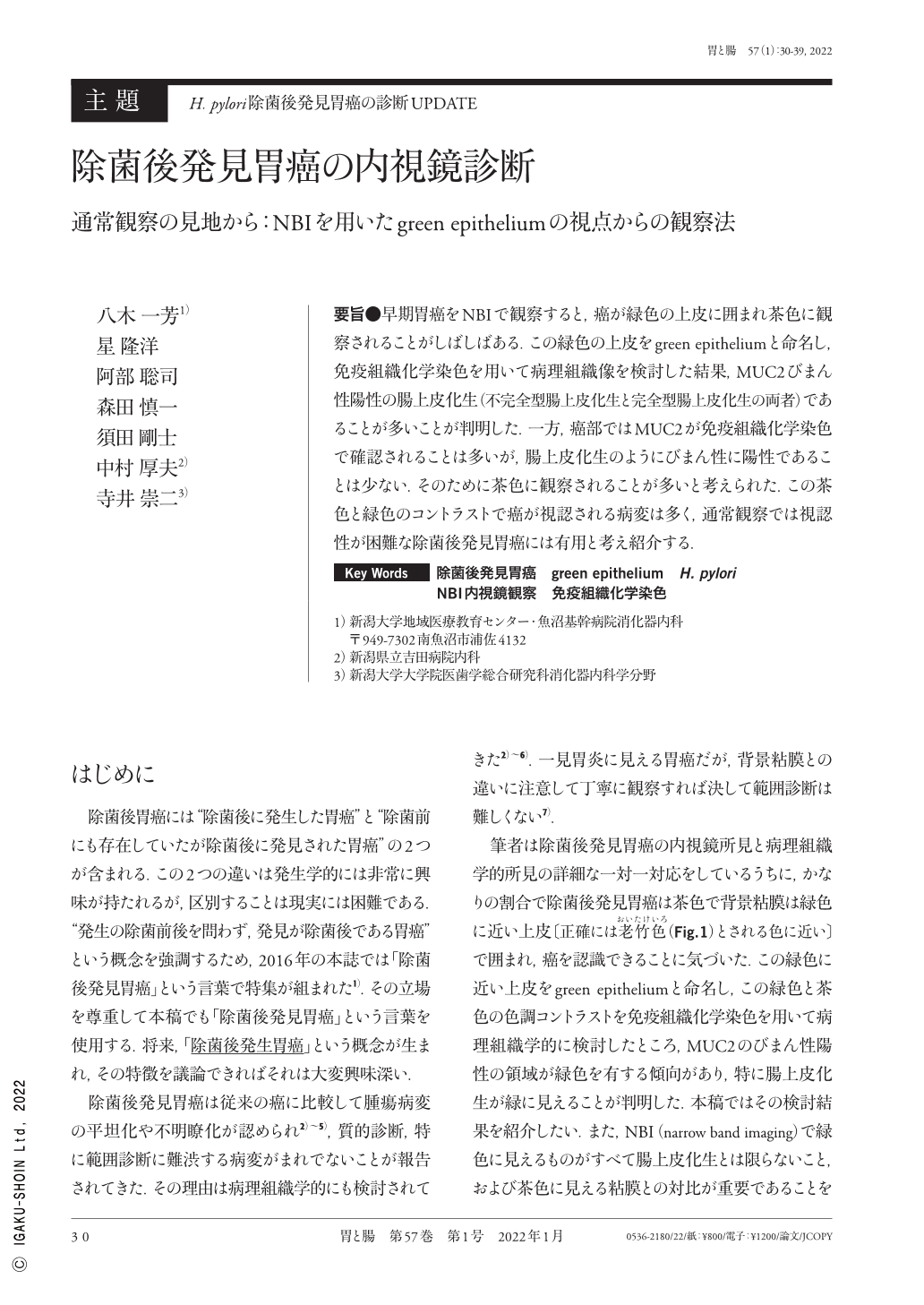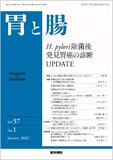Japanese
English
- 有料閲覧
- Abstract 文献概要
- 1ページ目 Look Inside
- 参考文献 Reference
要旨●早期胃癌をNBIで観察すると,癌が緑色の上皮に囲まれ茶色に観察されることがしばしばある.この緑色の上皮をgreen epitheliumと命名し,免疫組織化学染色を用いて病理組織像を検討した結果,MUC2びまん性陽性の腸上皮化生(不完全型腸上皮化生と完全型腸上皮化生の両者)であることが多いことが判明した.一方,癌部ではMUC2が免疫組織化学染色で確認されることは多いが,腸上皮化生のようにびまん性に陽性であることは少ない.そのために茶色に観察されることが多いと考えられた.この茶色と緑色のコントラストで癌が視認される病変は多く,通常観察では視認性が困難な除菌後発見胃癌には有用と考え紹介する.
A gastric cancer is often observed as a brownish area surrounding green-colored mucosa upon NBI(narrow band imaging)endoscopy. This green-colored mucosa was termed as green epithelium and an immunohistological study was performed. The results of this study revealed that the majority of the green epithelium was MUC2- positive, giving rise to a condition known as intestinal metaplasia. Cancers often include MUC2 ; however, diffuse MUC2-positive cancer cells are rare. Therefore, cancer is thought to be observed as a brownish area. Thus, NBI endoscopy is a practical and convenient method for observing gastric cancers after eradication therapy because this technique provides an increased contrast between the mucosa(green)and lesions(brown), which are often not clearly observed via conventional endoscopy.

Copyright © 2022, Igaku-Shoin Ltd. All rights reserved.


